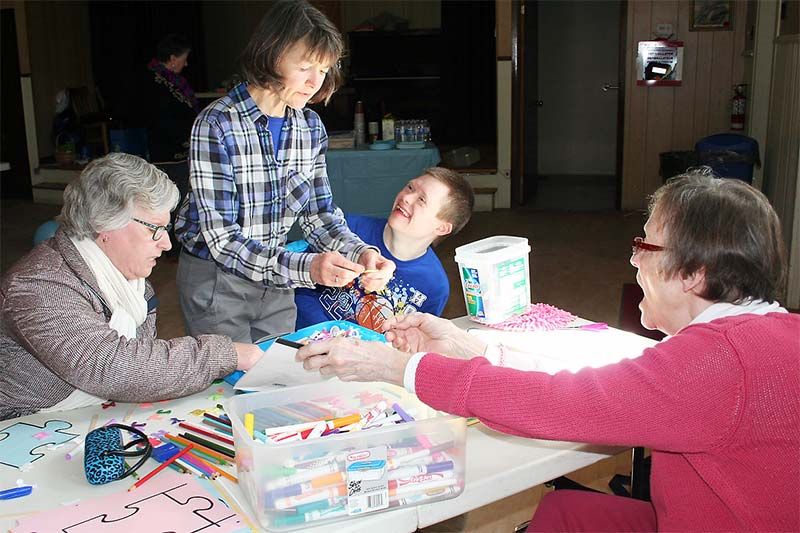Craig Bakay | Apr 06, 2017
“If you’ve met one person with autism, you’ve met one person with autism,” said Lillian Barker-Godfrey as Community Living North Frontenac hosted a games afternoon last Sunday at Oso Hall in conjunction with World Autism Awareness Day.
Although current thinking is shying away from the ‘autism spectrum’ philosophy, it is still highly variable neuro-development disorder, that first appears in infancy or childhood. Those with autism may be developmentally impaired in some aspects but not in others. They may even display superior development in some areas.
“Not everybody with autism has an intellectual disability,” she said. “And medical professionals that diagnose autism don’t refer to it as a ‘spectrum’ any more.
“But there can be a wide range of aspects and there is no definitive diagnostic tool like a blood test. It has to be determined by observation.”
One common aspect tends to be social communications issues and/or instances of repetitive behaviour, she said.
“Brains are wired differently,” she said. “People with autism process information differently.”
This can manifest itself in both hyper- and hypo-sensitivity to sensory stimulation, including sight, sound, touch, taste and smells, and that can be overwhelming, she said.
“For example, some people with autism can hear a plane coming long before we do,” she said. “And some need extra sensory stimulation.
“We try to help them meet their own sensory needs.”
She said the key is to realize that people with autism perceive the world differently.
“Some tend not to look people in the eye,” she said. “That can be overwhelming for them.
“For many, routine is very important and it becomes very stressful for them if that is broken or there is a change in their environment.”
But we all have sensory differences and we can relate if we think it out, she said.
“For example, some people have difficulty waiting in line and their stress levels are high in those situations,” she said. “At concerts, some people like to be in the middle of the crowds while others prefer the fringes and have to calm themselves down by working out an exit strategy.”
Another curious quirk is that autism is more prevalent in males than females by a ratio of 5-1. (Hence all the blue balloons decorating the hall.)
And it’s also estimated that 1 person in 68 has some form of autism.
However, there is some light at the end of the tunnel, she said.
“Overall, people are becoming more accepting,” she said. “Patience is a big thing.
“But, there are so many parts to this that there is no stereotype.”
More Stories
- Harrowsmith Public School and the Magic of Theatre
- You’re a Good Man Charlie Brown – a school wide effort at SHS
- Leadership From Within
- New Bulk Water Station in Sydenham
- Frontenac County Council looks at Healthcare Recruitment
- Good Turn Out Maple Fest Despite Rain
- Future looking brighter for Denbigh Fire Department says Chief
- Local Favourites featured at 2nd Annual SF Music Festival
- Perth Festival of the Maples, Saturday, April 27
- South Frontenac Council

